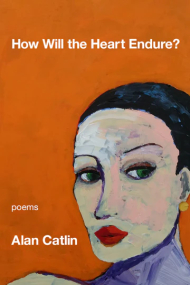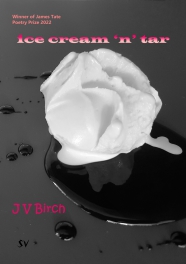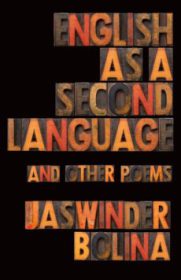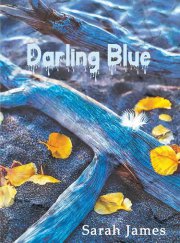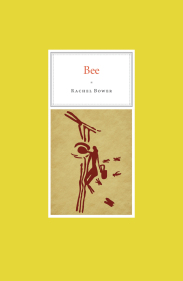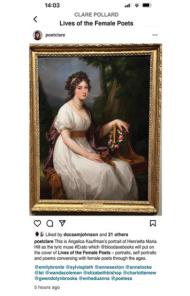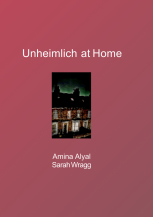
Alan Catlin, How Will the Heart Endure?,
Kelsay Books, 2023. ISBN: 978-1639803873. 115pp. $23.00.
Alan Catlin’s poem, “After Diane died, Avedon said to a former assistant,” in which the fashion and portrait photographer, Richard Avedon, praises the talent of Diane Arbus, reads:
“I would give anything to
have her talent.”
The former assistant said,
“No, you wouldn’t.”
How Will the Heart Endure? opens with Diane Arbus dead in her apartment, stoked on barbiturates, wrists slit.
When her married-to-another lover found Diane
she wasn’t just dead in her bathtub
she was dissolving
Nope, you probably wouldn’t
give anything. Catlin’s 3-part collection, which spotlights Arbus’ personal life, her eccentricities, and her work (both her photographic style, involving herself with her subjects, and the
photographs themselves), captures the tragic artist in stark, unglamorous, demythologized detail. Beginning with the section, “Arbused,” in which we learn about her incestuous relationship with her
brother, the U.S. poet laureate Howard Nemerov, her divorce from her husband Allan Arbus whom she married at the age of 18, and her teachers and influences (John Berger, August Sander, Susan Sontag,
Lisette Model among them), her subjects like Eddie Carmel, “the Jewish Giant,” and then two subsequent sections “Group Portrait with Freaks” and “Portfolio: Untitled and Otherwise,” which both focus
on her work, Catlin paints a comprehensive picture of the troubled genius.
The poems, “The subjects may have been strangers when they
meet,” “Model, a well-known teacher and ace photographer,” and “Lisette Model’s Feet” center on Arbus’ teacher, Lisette Model (“who said of / Sontag, // ‘She knows everything but / understands
nothing.’”). The competitive world of early photography is the subtext. Catlin writes that Model “gave Diane / permission
to pursue her signature
subjects: freaks
Now she is mostly known as
the teacher of Diane Arbus
By befriending her subjects rather than objectifying them, critics agree that Diane Arbus brought a psychological intensity to her work. Her subjects were strippers, cross-dressers, nudists, carnival performers, sideshow freaks. But money was always an issue, and she had to take magazine assignments and commissions, photographing the likes of Bennett Cerf and Ozzie and Harriet Nelson. In “Diane Arbus held,” Catlin slyly alludes to this.
Could you imagine Ozzie and Harriet,
America’s quintessential, middle class,
no-conflict couple in bed?
Diane could
She did David and Ricky too with their families,
not necessarily in bed
Happy, Happy, Happy Nelsons
according to Esquire photo caption
Catlin’s use of direct quotations throughout the collection adds a sort of documentary veracity to his portrait. Of Model, for instance, in a poem from the second section titled “Mary Ellen Mark, Edward Simmons, South Bronx, H.E.L.P. Shelter, NY, 1993 an American Odyssey photo” (the very title points to the generous use of testimonial evidence), Arbus is quoted as saying, “It was my teacher, Lisette Model, who finally made it clear to me that the more specific you are, the more general it will be.”
Quotations from Robert Lowell, Edvard Munch, Susan Sontag, Jean Michael Basquiat, Mary Ellen Mark, Basho, Rimbaud, Sadiko Murakami, Angela Carter, Andy Warhol, Cid Corman, Stephen Frank and others help establish the picture of Diane Arbus as a serious artist. Perhaps the most revealing is the epigraph to How Will the Heart Endure? from Maggie Jaffe’s “Photos by Diane Arbus”:
If you photographed the real
Diane Arbus, who would we see?
A cranky, crying girl,
always hot and tired.
Arbus’ apartment, the one in which she was found dead, was a window into her soul. Catlin
writes about it in several poems, including “Selected images from the collage wall in Diane Arbus’ last apartment,” “Avedon and the Collage Wall,” “Eva Rubinstein’s Diane Arbus Seated Before the
Collage Wall” and “Diane’s Lists of potential subjects and general topics.” In the first he details:
Gruesome newspaper headlines
burning car pictures
like Warhol
silk screens
it’s not the color
but the absence of it
it’s all about
the bodies
and the blood
The infamous wall (“dead bodies, / human rejects / Weegee wannabee, / bad guys and hit mobs” as he further describes in “Avedon and the Collage Wall”) also displayed her famous freaks:
The World’s Fattest Woman
Group Portrait of
Hubert’s Dime Museum
freaks
Hubert’s Dime Museum was a favorite of Arbus’. It was there she found not only the Jewish Giant but Tiny Tim as well, who would go on to be a freak celebrity himself with songs like “Tiptoe through the Tulips” and marrying the first of his three wives, “Miss Vicki,” on The Tonight Show with Johnny Carson. “House of Horrors Coney Island” is another Catlin poem about the kind of freak venue that appealed to Arbus. “Mother Cabrini, a disinterred saint in her glass and gold casket NYC, 1960” highlights another of Arbus’ unique photographic projects.
Fittingly, Catlin also imaginatively enters Arbus’ dream world in poems like “Eddie had occasional work in the movies” in which he quotes Arbus: “You know how every woman has nightmares when she’s pregnant that her baby will be born a monster?” He ends the poem with the question: “What did Diane dream when she was pregnant?” The very next poem, “Diane pregnant,” lets us know! It ain’t pretty. The series of “Untitled” poems that close out the collection (“Untitled #1,” “Untitled #2, etc., to “Untitled #11 Revelations”) also delve into dreams. The epigraph to “Untitled #5” comes from Eyes Wide Shut (“We’re not dreaming now.”). The poem, “Diane Arbus Spellbound” is also dreamlike (“as if trapped in / an Escher landscape”). Catlin concludes the poem:
Where would she end up then?
There does not appear
to be a solution to this
dilemma.
Waking up is not an option.
Suffering from depression that may have been exacerbated by hepatitis, Arbus committed suicide in July, 1971, while living at Westbeth Artists Community in New York City. She wrote the words “Last Supper” in her diary and placed her appointment book on the stairs leading up to the bathroom. Her lover, Marvin Israel, found her body in the bathtub two days later. She was 48 years old. Alan Catlin’s portrait of her in How Will the Heart Endure? is compelling, even inspiring, a captivating collection.
Charles Rammelkamp
To order this book click here
Charles Rammelkamp is Prose Editor for BrickHouse Books in Baltimore, where he lives, and edits The Potomac, an online literary journal. http://thepotomacjournal.com. His photographs, poetry and fiction have appeared in many literary journals. His latest book is a collection of poems called Mata Hari: Eye of the Day (Apprentice House, Loyola University), and another poetry collection, American Zeitgeist, is forthcoming from Apprentice House.
J.V. Birch, ice cream ‘n’ tar, SurVision Books, 2023. ISBN 9781912963430. 30pp.
This latest chapbook by British born Australian poet J K Birch laments the vandalism being inflicted by/during the Anthropocene, in striking poems which combine humour and opprobrium. In the title poem, there is nostalgia for the departed ice (cream) age of her childhood, when ‘pockets full of pence’ could buy a lolly from the itinerant ‘ice cream van with its music-box music’, and therer were summers hot enough to melt the tar of a newly laid road.
Birch muses wistfully over snow, both in first person reminiscences and leaps of imagination which see ‘Ms Snow’ being interviewed in her capacity as ‘legend’. This is presented tongue in cheek as a ‘transcript from the archives of last recorded performance’.
Birch’s passion for and desire to responsible steward the planet is evident on every page, and communicates most effectively when least didactic. Yes, we can all be guilty of ‘ignoring the footprint delivery will make’ (“Small beginnings”) but this familiar type of eco-crime comes across more strongly when the full toolbox of poetic devices is deployed. The personification in “M Nature Comes Home” is well-sustained, with a strong ending:
Know then, like lightning, how she wishes she was no mother at all.’
There is a welcome injection of humour in the witty depiction of Moon as a jaded barfly, who
‘sits down at the end of the day …
to meet the dark in the bar, shouts
the first round then slags off the sun
down whiskies, sings songs, flirts
with some stars
(“Moon”). The ambiguous possibilities of what/who ‘stars’ these might be teases the reader.
The ‘found’ elements in “After the Anthropocene” create another nicely judged and understated effect: humans as ‘A vintage style for any home’ is a neatly ironic way of suggesting rather than ‘telling’ the reader that we’re on borrowed time – or rather than we have stolen from the planet which hosts us, for now. Indeed, perhaps we do
… behave as if we are renting it and have
all the time in the world
to start the repairs.
(“Earth turn”).
Thought-provoking, and at its best, memorable, this is a collection to prod your conscience. Are you sitting comfortably? Perhaps you shouldn’t be.
Hannah Stone
To order this book click here
Hannah Stone is the author of Lodestone (Stairwell Books, 2016), Missing Miles (Indigo Dream Publishing, 2017), Swn y Morloi (Maytree Press, 2019) and several collaborations, including Fit to Bust with Pamela Scobie (Runcible Spoon, 2020). She convenes the poets/composers forum for Leeds Lieder, curates Nowt but Verse for Leeds Library, is poet-theologian in Virtual Residence for Leeds Church Institute and editor of the literary journal Dream Catcher. Contact her on hannahstone14@hotmail.com for readings, workshops or book purchases.
Jaswinder Bolina,
English as a Second Language and Other Poems, Copper Canyon Press, 2023. ISBN: 9781556596575. 80pp. $17.00.
There’s usually nothing more somber than an elegy. They involve the elements of mourning – grief, wistful memories of the dead, often some sober consolation for the loss. Thomas’ famous villanelle for his dying father, “Do not go gentle into that good night,” Whitman’s elegy for Lincoln, “Oh Captain! My Captain!” and Shelley’s elegy on the death of John Keats, “Adonais” (“I weep for Adonais—he is dead!”) come to mind. Jaswinder Bolina turns the elegy on its head (or at least twists its arm). Ten of the thirty-seven poems in his new collection are elegies – “The Billy Graham Elegy” and “Terrible Elegy,” on the death of Rush Limbaugh, among them (“I believe a person can celebrate the death of a terrible person / and not be a terrible person”), Jesus, a kid with Oedipal issues, and the Twentieth Century, among others. And they are so often comic, making the reader chuckle as often as weep.
Indeed, “Actual Elegy” feels like it might just be in the tone of the subdued, melancholy elegy we expect to encounter, when it begins:
I’m trying to say something that feels like hearing
your voice for the first time.
It isn’t working. I keep ending up at myself,
the part of myself that accidentally believes
in g-d sometimes
The poet goes on to reflect on the guilt he feels over the accidental killing of an insect, considering the possibilities of punishment or forgiveness it entails. But “I’m still here. / And you never are.” The finality of death sinks in…but then Bolina cracks wise to end the poem with the line, “Which is the trouble with this place.”
This is not to say Bolina’s
elegies are without the heartfelt awareness of loss. Indeed, several of his poems take on the afterlife (“A Little Slice of Heaven,” “The Plague on TV”), which is to say he’s fully conscious of the
fleeting nature of this world and the innocence we bring to it.
There’s also plenty of lamentation. In “Elegy for a Dog” his
frustration with the departed (not necessarily dead, but gone) person he addresses spills over.
but we couldn’t, just couldn’t stomach any longer
your reveries on Joyce and on Mailer, on scotch
and Larry Bird, your insistence on analog audio
equipment on which you’d mostly play bootlegs
of Bob Dylan, oozingly, insistently calling him
DYlin like he was a beloved Labrador struck
by a Coke truck, and you in your beat-up Chucks,
your cowlick, and Levi’s, bearing the dog corpse
out of a ditch to bury beneath the ole willow tree.
And “Bird, Elegy,” on the death of a bird found on the
balcony (“splayed / like a ragged umbrella”) is as much about his child’s encounter with death as it is about the dead. The poem is “after Constantin Brâncuși,” the Romanian sculptor and painter who made his career in France, and Bolina confesses that his “cheesy midwestern
grief”
is something I can’t say
in painting or in sculpture,
in French or Romanian
But he goes on later in the poem, “I think he understands
me,
the baby, though he doesn’t speak
Romanian or French or English;
he only knows painting
and sculpture, not the words,
but the contours of sorrow
The title poem of Jaswinder Bolina’s new collection, which takes place twenty years before his birth in Chicago, begins:
We came upon a line of English
eating dog, we thought, on plump bread
steamed and slathered with a drab yellow
chutney from a cart in the Kew Gardens.
Later in the poem, related in the voice of his father, his uncle holds up seven fingers and points to the sky, “a code of theirs he’d broken.” How can you not laugh at this incident about immigrants buying hot dogs and Seven Up from a street vendor? “Americanistan” is likewise a send-up of suburbia, the leaf blowers and riding mowers (“A reveille of zzzooooos and zzzaaaaas”). “Ancestral Poem” is another amusing take on suburbia, immigrants settling in Chicago. It’s told by a parent to his offspring, family lore.
And so we settled upon the shore
of a nasally Midwestern sea
governed by a moon that hung
like a medal we’d won above
the subdivision.
The conceit of ancient family folklore is driven home in the amusing final lines:
Your bibiji nursed her twilight
chai in a patio chair. She said a thing
then that made them laugh, the clouds
like painted bulls tumbling across a caved wall
in this, the only known record of these events.
Many of the later poems in
English as a Second Language are in the voice of the parent of an infant. Besides “Bird, Elegy” and “A Little Slice of Heaven” there are “All His Fascist Wants,” “Lines Composed Upon
Changing a Diaper,” and “Probable Poem for the Furious Infant,” all of whose titles already convey the comic metaphysical and social implications of parenthood!
The collection ends on “The
Usual Entertainment,” in a stadium, watching a baseball game, “where we lose / so much more than we win, but whatever the score
I say, what good is the soul without its tongue
and its teeth, without its nose for the cut of the grass,
its ear for the hum on the air, without its words
and no throat to holler them out of to everyone
glittering here in the sticky of the cheap seats?
But wait! There’s more! The book unwinds backwards to its start! You have to read it to see what I mean. You’ll certainly enjoy it, cheap seats or elsewhere.
Charles Rammelkamp
To order this book click here
Charles Rammelkamp is Prose Editor for BrickHouse Books in Baltimore, where he lives, and edits The Potomac, an online literary journal. http://thepotomacjournal.com. His photographs, poetry and fiction have appeared in many literary journals. His latest book is a collection of poems called Mata Hari: Eye of the Day (Apprentice House, Loyola University), and another poetry collection, American Zeitgeist, is forthcoming from Apprentice House.
